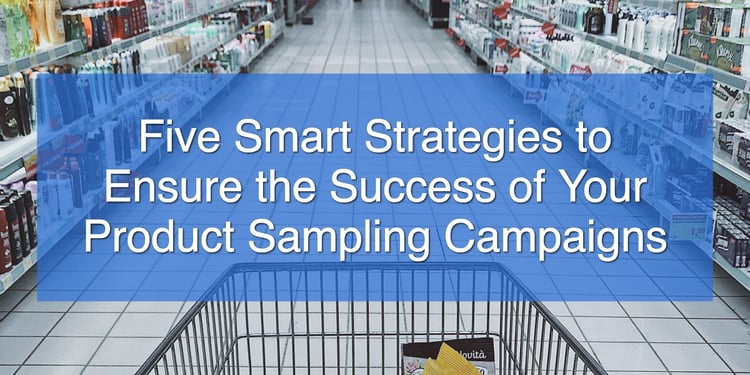Have you ever received a free sample for a product you've never bought? Did you use the product? More importantly, if you used it and liked it, did you subsequently buy that product, even if it meant switching from a trusted brand?
What Is Product Sampling?
Product sampling is a good example of a business loss-leader, meaning it initially costs your business money, but over the long haul makes more than it costs because it increases your market reach, garners new customers and increases product reviews to build your brand. As Small Business explains, product sampling is an effective way to beat out your competition:
"Businesses wishing to promote a new product are often faced with a competitive marketplace. This is where product samples come in handy. Offering product samples to prospective consumers is beneficial, as it increases exposure, gives the consumers a taste of what's to come and allows them to feel confident with their purchase. By working sample distribution into the marketing budget, the business will have the upper hand when it comes to competition."
Product Sampling by the Numbers
That sounds good in theory, but not every theory works out in practice. Product sampling, however, according to several recent studies, is effective in building your customer base and increasing revenues. According to Post Media, for example:
- product samples are sent to about 70 million households each quarter
- about 75% of consumers say they've become aware of a product through a product sample
- more than 80% of consumers say they'd use a product if they received a sample
- more than 60% if consumers say receiving a product sample is the best way for them to try a new brand
How to Make Product Sampling Work for Your Business
Those are some impressive metrics, but of course they reflect average performance. Some companies do much better, while others don't do nearly so well—and the begs the question of what separates the winners from the losers. What is it that some businesses do to make product sampling a trusted weapon in their marketing arsenal?
Although every business is different, some strategies tend to work for virtually every business, including the following 5:
- Clearly define your goals: you can use product sampling to achieve a variety of goals, from increasing sales to generating product reviews for single product to doing the same for multiple products. Having clearly-defined goals will determine what strategies you use to succeed. For example, if you want more product reviews for a wide swath of products, you'll send samples to relatively small numbers of prospective customers for each product. If on the other hand you're focused on a single product, you might want to nurture the leads to whom you send samples with a substantial amount of useful, valuable content.
- Select the right product recipients: if you want your product sampling campaigns to have maximum impact (meaning they generate a lot of sales or product reviews), it's important to send products to those customers who are most likely to want them. You can increase the odds of success by surveying customers before you send them products (asking, for example, which products they're most interested in), or by leveraging accurate customer quantitative and qualitative data.
- Choose the right products: some types of products work better in sampling campaigns than others. For example, almost half of consumers won't try a product that doesn't have good product reviews, so it's better to ensure the product you sample has sufficient reviews. In addition, it's a good idea to use sampling for products that get a lot of web traffic but have low conversion rates—in many cases, what's missing for these products are the reviews which product sampling will generate.
- Run your campaign before you launch your products: again, the number (and quality) of customer reviews you display is directly related to the success of your product launches. For this reason, it's smart to launch your product sampling campaign before you launch your products. Doing so will give you the reviews you need to ensure marketing success.
- Use email marketing to complement your campaigns: you don't want to send samples and then sit back and wait for something good to happen. Instead, immediately after distributing your products, send recipients emails which help nurture their interest and motivate them to write reviews for you. If generating reviews is one of your goals, make it as easy as possible for customers to write them—for example, by including a link within the email which takes them to your review form.
Conclusion
Like any other marketing strategy, product sampling campaigns will work for your business if you're persistent and follow best practices. Admittedly, that can be a bit complicated, especially if you're new to it. Fortunately, there are marketing agencies with deep experience in product promotions. To learn more about the ways our events and promotions strategies can help you increase sales and build your business, contact us today.



